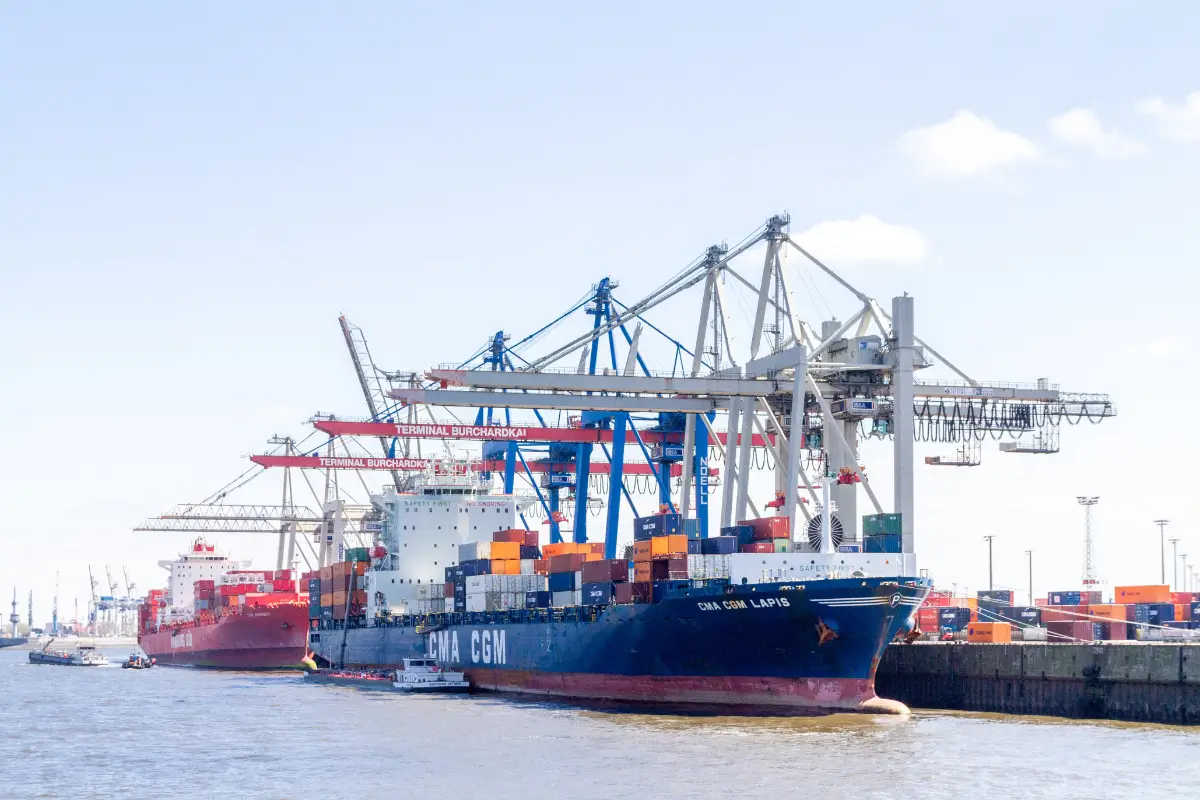Vessel Seizure Execution in Indonesian Law

In addition to creating a legal relationship between parties, an agreement is further used as a means to regulate the exchange of rights and obligations of each party involved. An agreement is to be carried out properly, fairly and in proportion to the arrangements agreed upon by the parties. However, in practice, the exchange of obligations does not always go according to what has been mutually agreed upon in the agreement. As a result, a default occurs e.g., the deliverable set out in the agreement is not completed on time, is not carried out as it should be, or is not carried out at all.
For instance, if a debtor is negligent in carrying out its obligations based on the agreement (default), the creditor can seize the debtor’s goods or property, both movable and immovable property by first applying for a Seizure Warrant to the Court.
Legal Basis for Seizure of Vessel as Security
- Article 1162-1232 of Book II Civil Code;
- Article 1131 of the Civil Code, which states that movable security such as vessels can be used as objects of seizure;
- Article 224 in conjunction with Article 195 of HIR and Article 440 of Rv concerning Procedures for Seizure Execution on Vessel as Security; and
- Article 60 paragraph (1) of Law Number 17 of 2008 concerning Shipping as a Mortgage Base, which states that Indonesian Vessels can be used as security for debts by imposing mortgages on vessels and that the Grosse Mortgage Deed has the same executive power as that of a court decision.
Seizure of the debtor’s vessel by the creditor is categorized as Conservatory Seizure, a seizure of movable and immovable property to carry out a court decision, meaning that the debtor’s vessel is to be sold, and the money from the sale used to pay off debts that have not been fulfilled by the debtor.
The Procedure for Seizure Execution
Seizure of the debtor’s assets, which in this case is a vessel, can be carried out in two ways. First, the seizure can be carried out through a court process which begins with a written application for seizure execution in the form of a lawsuit. The stages are illustrated in the chart below:

Apart from that, several things must be considered before the seizure is carried out:
- The Bailiff examines the financial journal of court costs, and the cost of carrying out the seizure, the details of which include: Non-Tax State Revenue (PNBP), Stamp Fees, and Execution Fees (Transportation Fees, Witness Fees, and Handling Fees).
- The Bailiff writes letters related to the execution of the seizure, including the day and date of the seizure, notification to the parties to come, and a request for security from the local police.
- The Bailiff prepares the facilities related to the seizure such as 2 (two) witnesses, Minutes of Seizure of Security Objects, etc.
- The process of seizing a security object must be carried out at the location of the object being seized.
Second, seizure execution can be carried out directly without going through a court process, which is known as “Execution Parate”, or commonly referred to as selling power, in which if the debtor defaults, the creditor can execute the security object without having to ask for fiat from the court. In this case, there is no need for prior seizure, or involving a bailiff. Sales are made in public or at auctions.
Seizure execution through courts is often considered ineffective and inefficient, time-consuming and expensive. For this reason, the most appropriate solution that can be taken by a creditor, who is a maritime mortgage holder, is to apply for seizure execution. However, in its implementation, Indonesia adheres to 2 (two) principles which are then considered to hamper the effectiveness and efficiency of the seizure execution of a vessel, as follows:
- Rijdende Beslag Principle, which states that the seizure execution on a vessel is prohobited fromimpade hindering and obstructing company activities, or shutting down the debtor’s operational activities resulting in the seized vessel remaining free to sail anywhere, and
- Principle of Prohibition on Seizure of Vessel Ready to Sail, which states that seizure execution may not reduce the right to control, exploit and use the seized goods or property.
Seizure Execution on Vessel as Security for Bad Loan
One example of the seizure execution on a vessel as security in a financing agreement is the case that occurred between PT Bank Muamalat Indonesia, which provided a Sharia financing facility to PT Kartika Nusantara Riezkytama on a Vessel “Kapal Motor Karunia 1903” in the amount of Rp. 10,000,000,000 (Ten Billion Rupiahs). Then, to guarantee against any risk that may arise on board, PT. Bank Muamalat Indonesia bound a third party, PT. Asuransi Takaful, as the vessel insurer for risks. However, a bad loan occurred between PT Kartika Nusantara Riezkytama as the debtor and PT Bank Muamalat Indonesia as the creditor. The debtor no longer re-paid for the financing from the debt collection 1 to debt collection 5 stages.The Creditor finally carried out policies to rescue the bad loan starting from rescheduling, re-conditioning, and realignment to liquidation or sale of the property used as security to fulfill the debtor’s debt obligation. However, the problem was that the vessel used as security was still free to sail, and there was a risk of the vessel to sink.
Until it was known later that the Vessel “Kapal Motor Karunia 1903” had disappeared and its whereabouts were unknown. Various attempts had been made in this regard, including with the assistance of PT Asoka Bahari to conduct an investigation or search for the vessel, but the vessel could not be found and there was a possibility that the vessel was outside the National Jurisdiction.
In the Civil Code Procedure in Indonesia, there are no provisions regarding the seizure of objects that are outside the territory of Indonesia. Thus, efforts that can be made if the vessel is outside the territorial waters of Indonesia are by suing or requesting an execution at the court where the vessel is located, or asking an Indonesian court to order the debtor to return the vessel to Indonesian territory, but of course, this takes time and costs more money.
PT Bank Muamalat Indonesia as the creditor did not necessarily receive protection for the loss of the vessel being the object of the mortgage because the vessel was lost and the insurance could not be claimed. Article 1131 of the Civil Code has indeed regulated that all the wealth of the debtor is security for all the agreements they make, but does not guarantee that the wealth must exist when the debtor defaults. If, during the debt-receipt relationship, some of the debtor’s assets are sold to another party, until the remainder is no longer sufficient to pay off the debt, then the said assets are no longer the assets of the debtor and no longer the security as referred to in Article 1131 of the Civil Code.
In conclusion, the settlement of the debt payment obligations through seizure execution on a vessel used as security for bad loan with the litigation process through filing ordinary civil lawsuits and direct execution efforts is far more effective and efficient in getting back the rights of the creditor because the seizure execution can immediately be carried out without going through a long and convoluted court process. There may also be parties interested in buying the property, so the sale process at auction can be carried out in a short time. There may be some obstacles in its implementation, that is, in the form of resistance from the debtor or from third parties, but their resistance will not hinder or delay the seizure execution, except in very extraordinary cases.
Read More: Enforcement of International Arbitral Award in Indonesia
Seizure from a Criminal Law Perspective
Seized objects have a very important role in criminal proceedings because seized objects are evidence of a criminal case seized for the purposes of proof in court. The Criminal Code Procedure defines seizure as a forced attempt by investigators to take or “seize” something from a suspect, holder or depository. After the object is taken or seized by the investigator, the object is then placed under the control of the police. In this case, investigators from the Police have the authority to seize by first obtaining a Seizure Warrant granted by the Chief Justice of the Court.
The Criminal Code Procedure limits items that can be seized, which are limited to objects related to criminal acts. This means that objects that are not related to a crime cannot be seized. Conservatory Seizure (Conservatoire Beslag) in the Civil Code Procedure has a different concept from seizure in the Criminal Code Procedure. The basic difference is that the concept of seizure in the Criminal Law Procedure can only be applied to objects that constitute corpora delicti, objects obtained from the proceeds of a crime, and instrumenta delicti, objects used as tools to commit a crime. Meanwhile, Conservatory Seizure has the meaning that objects or items that can be subject to security are objects that belong to the debtor, both movable and immovable, whether related to the case or not, to guarantee that the decision can be implemented.
Seizure Procedures in Criminal Code Procedure
The procedure for obtaining seizure objects is specified in Articles 38 to 46 of the Criminal Code Procedure and Articles 128 to 130 of the Criminal Law Procedure. According to those provisions, there are several forms of seizure procedures, starting from ordinary/general seizure procedures, seizure procedures in necessary and urgent circumstances, seizure procedures in cases that are caught red-handed and indirect seizure procedures in the form of orders for the delivery of object that needs to be seized by investigators from the owner or holder of the object.
The procedure for ordinary seizure is as follows:
- Seizure can only be carried out after obtaining permission from the court;
- The investigator shows his identity to the person who owns the object to be seized, along with a Seizure Warrant (Article 128 of the Criminal Code Procedure);
- The investigator shows the object to be seized;
- The police make the Minutes of SeizureSeizure which are read out and signed in the presence of the person who owns the object, or his family;
- The police submit the Minutes of SeizureSeizure to the investigator’s supervisor and the person who owns the object, or his family;
- The police wrap items that become evidence.
Seizure of Vessel as Assets in Alleged Embezzlement Cases
Seizure execution on a vessel can also occur in the criminal law, for example, the President Director of PT Meratus Line was reported for alleged criminal acts of fraud and/or embezzlement in office juncto participation in money laundering of fuel oil (BBM). East Java police investigators continued their investigation by applying for a request to seize fuel barges/vessels owned by two affiliated companies, one of which was owned by PT Bahana Line, to the Surabaya District Court. However, in this case, PT Bahana Line together with Bahana Ocean Line urged East Java Regional Police investigators to seize the vessel belonging to PT Meratus Line because they are inseparable from the locus delicti or the Crime Scene (TKP) of the fuel fraud and embezzlement.
The basis for the seizure is in accordance with what is contained in Article 1 point 16 of the Criminal Code Procedure, which defines seizure as follows:
“Seizure is the disclosure of the actions of investigators to take over and or store movable, tangible or intangible objects to be under his control, as evidence in investigations, prosecutions, and examinations in court proceedings.”
***
About ADCO Law:
ADCO Law is a firm that offers clients a wide range of integrated legal services, including in commercial transactions and corporate disputes in a variety of industry sectors. Over the course of more than a decade, we have grown to understand our client’s industry and business as well as the regulatory aspect. In dealing with business dynamics, we provide comprehensive solid legal advice and solutions to minimize legal and business risks.
From Upstream to Downstream, We Understand Your Industry. In complex transactions as well as in certain cases, we are actively engaged with financial, tax, and environmental specialists, accountants, and law firms from various jurisdictions to give added value to our clients. Having strong relationships with Government agencies, regulators, associations, and industry stakeholders ensures that our firm has a holistic view of legal matters.
ADCO Law is a Proud Member of the Alliott Global Alliance (AGA) in Indonesia. Founded in 1979, AGA is one of the largest and fastest-growing global multidisciplinary alliances, with 215 member firms in 95 countries.
As a law firm, we also believe in regeneration. To stay abreast of business changes and stay relevant, our formation of lawyers is comprised of the top graduates from Indonesian and international law schools.
For further details, please contact:
Alvin Mediadi, Business Development Manager, Indonesia
+628 57 234 89625, [email protected]
Maulidza Oemar, Public Relations, Indonesia
+62 877-7528-1922, [email protected]



